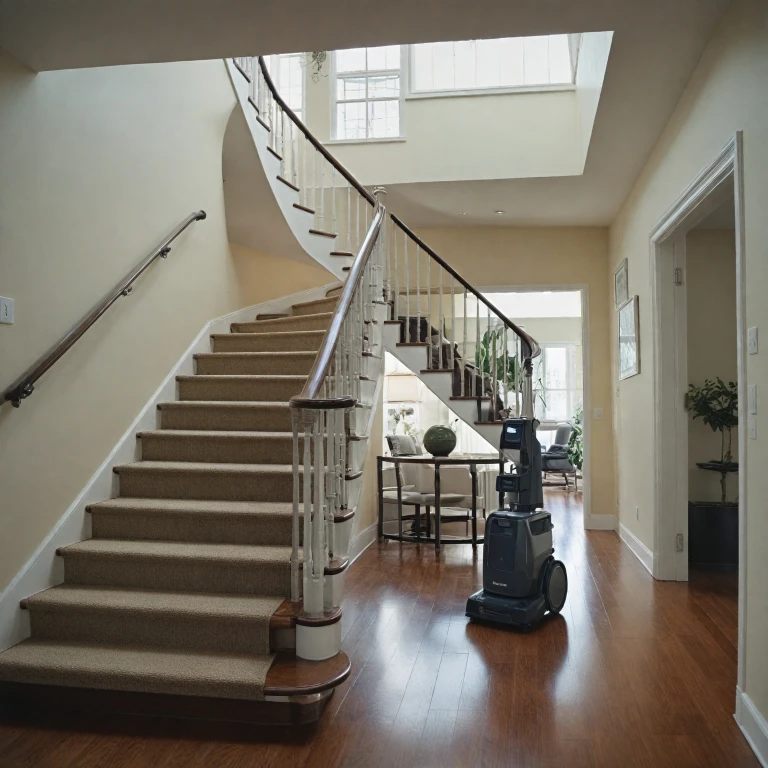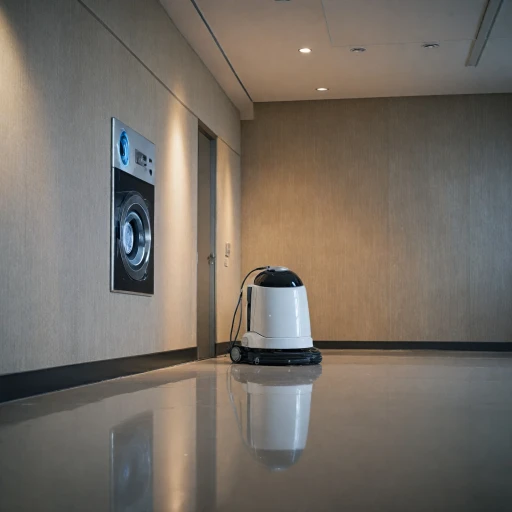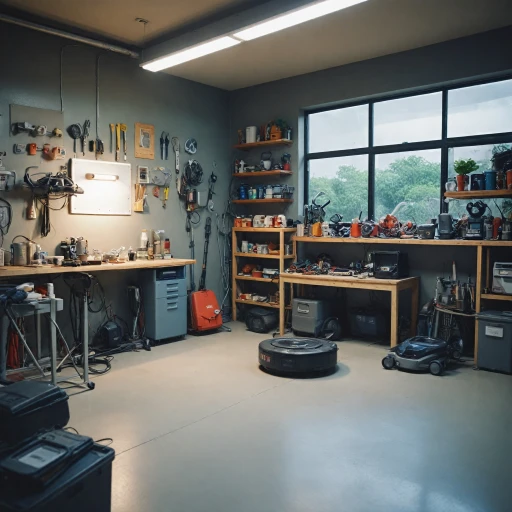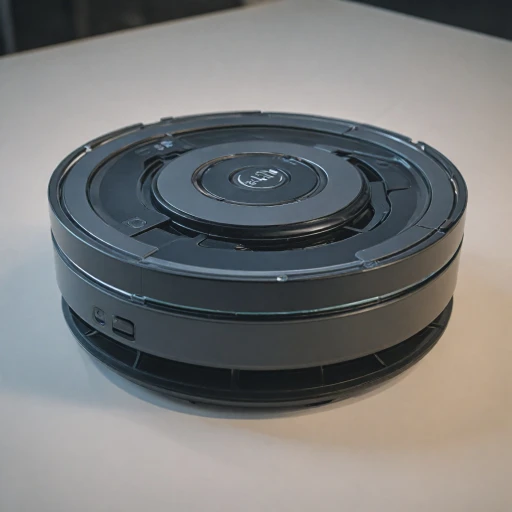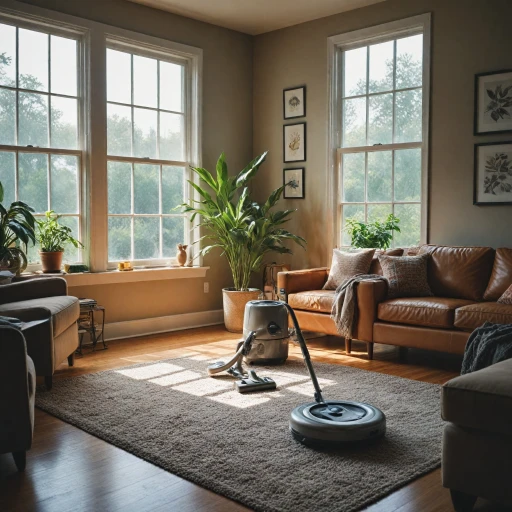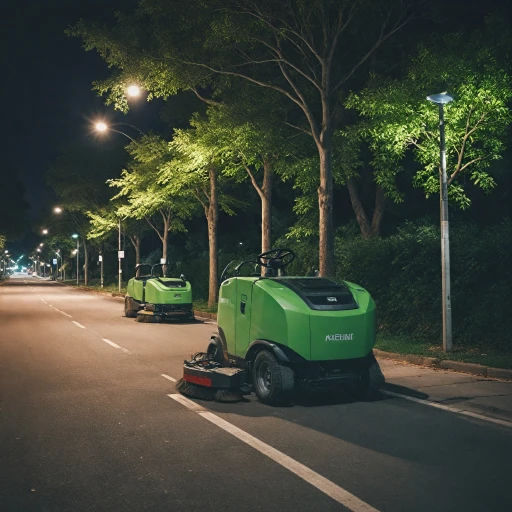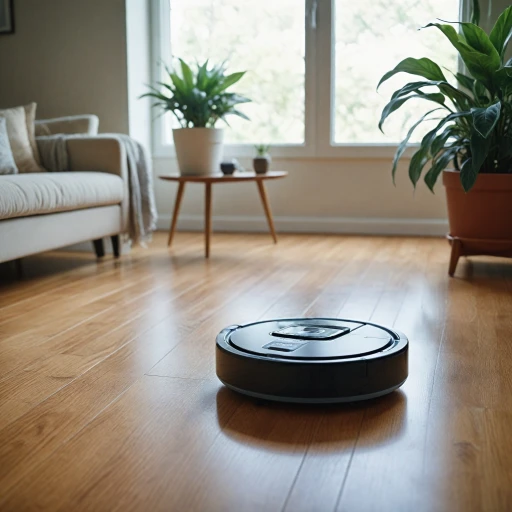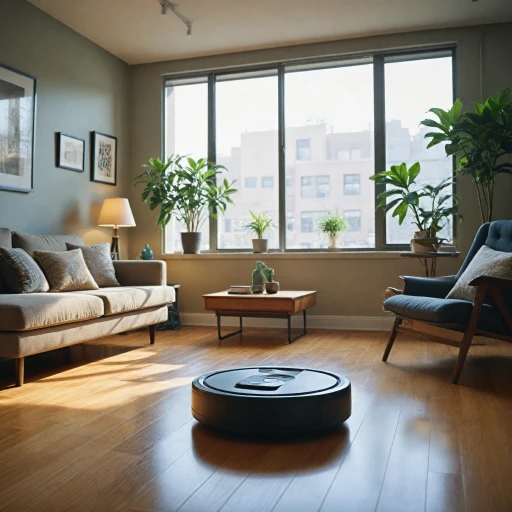
Understanding the Limitations of Robot Cleaners on Stairs
Recognizing the Challenges of Navigating Stairs with Technology
Understanding the limitations of robots when it comes to stairs is essential. Robot vacuums are innovative and efficient, but their design often poses a challenge when dealing with staircases. These devices excel on flat surfaces, cleaning floors, removing pet hair, and managing multi-floor navigation with remarkable efficiency. However, stairs present a unique scenario. The main reason why traditional robot vacuums struggle with stairs is due to their flat design and reliance on sensors. Most robot models are equipped with cliff sensors to prevent accidental falls, but these same sensors can prevent the devices from scaling or descending stairs, creating a major limitation in terms of stair climbing. Furthermore, the suction power, which might be exceptional for flat surfaces, doesn’t necessarily translate to effective stair cleaning due to the different angles and surfaces. Therefore, although these vacuums offer revolutionary cleaning capabilities for floors and even have the potential to revolutionize mop cleaning, stairs remain a hurdle. Most traditional robot vacuums are not built to transition between steps effectively, which impacts their ability to clean spaces such as stair risers or corners properly. While some of the best robot models are exploring solutions, including improved battery life and floor mapping capabilities, which might contribute to better navigation in the future, full robotic stair cleaning is still in development. As technology evolves, we can expect more sophisticated solutions that might incorporate features such as advanced suction and climbing capabilities. However, until then, those seeking comprehensive cleaning solutions, especially in spaces with multiple staircases, might need to rely on alternative methods to keep stairs clean. If you're a pet owner, explore finding the ideal robot vacuum for pet hair that best meets your specific cleaning needs.Innovative Features to Look for in a Robot Cleaner
Key Features for Enhanced Stair-Cleansing Performance
When evaluating robot vacuums for stair cleaning effectiveness, you'll want to prioritize models that offer features specifically designed to tackle the challenges posed by stairs. Although robot vacuums are largely designed for flat surfaces, innovative engineering solutions are increasingly allowing them to handle stairs in certain capacities. Here are some components to consider:
- Cliff Sensors: Most robot vacuum cleaners are equipped with cliff sensors to prevent them from falling down stairs. These sensors detect sudden drops and adjust the vacuums' course automatically, ensuring safety while cleaning edges near staircases.
- Powerful Suction: Areas near stairs can accumulate more dirt and debris, particularly if they are high-traffic zones. Choosing a vacuum with powerful suction capabilities ensures that dirt, dust, and pet hair are effectively cleaned.
- Floor Mapping and Navigation: Advanced floor mapping technology is crucial for robots to efficiently navigate multiple floors. This feature aids in optimizing cleaning paths and avoiding trouble spots near stairs.
- Multi-Floor Compatibility: Some vacuum models can adapt to various floor types, from hardwood to carpet. This adaptability ensures consistent cleaning across different surfaces around staircases.
- App Control and Scheduling: Robot vacuums with app control options let you customize cleaning schedules, making it easier to manage assistance around busy staircase areas.
- Battery Life: When focusing on larger homes with multiple staircases, the model's battery life becomes crucial. Look for vacuums that offer a strong balance between cleaning performance and longevity to efficiently manage longer sessions.
Collectively, these features elevate a standard robot vacuum into an asset capable of maintaining cleanliness in complex home setups. To further explore options, consider looking into specific models that have been recognized for their aptitude in handling challenging environments like staircases.
Comparing Popular Robot Cleaners for Staircase Use
Evaluating Top Robot Vacuums for Staircases
When looking for the best models to tackle stairs, it’s essential to consider how different features of robot vacuums affect their usability in multi-floor environments. Here’s a brief comparison based on user reviews and features.
- Climbing Ability: Not all robots are created equal when it comes to stair climbing. While some come equipped with advanced floor mapping and cliff sensors to prevent falls, others might struggle with even small thresholds.
- Suction Power: Depending on floor cleaning needs, a vacuum’s powerful suction can tackle pet hair and debris. Models with adjustable suction power provide more versatility across different flooring.
- Battery Life: Long battery life is crucial for uninterrupted cleaning, especially on larger, multi-level homes. Top-performing models can run for over two hours on a single charge.
- Multi-floor Mapping: Robot vacuums with advanced mapping capabilities can memorize home layouts across multiple floors, enhancing cleaning efficiency.
- Additional Features: The incorporation of vacuum mops and ascender functions can offer more comprehensive cleaning solutions, tackling smudged floors and complex stair designs. The Deebot Pro is one model praised for its multi-functionality.
With the market expanding, innovative climbing robots continue to emerge. For the time being, focusing on reliable features and positive reviews product is key to selecting a vacuum cleaner tailored for staircases.
Safety Measures and Precautions
Prioritizing Safe Operation and Preventing Accidents
Safety is paramount when integrating technology into our homes, particularly with robot vacuums navigating complex terrains such as stairs. Understanding and mitigating the risks associated with these devices is essential to ensure both the safety of your home environment and the longevity of your robot vacuum. One of the primary safety features in modern robot vacuums is the inclusion of cliff sensors. These sensors are specifically designed to prevent the vacuum from falling down stairs, a common concern for multi-floor cleaning scenarios. By detecting edges and drops, the sensors signal the vacuum to change direction, thereby avoiding potential damage to the device and any accidents in the home. Additionally, advanced models are equipped with floor mapping and mapping app capabilities, allowing a user to define and restrict certain zones. This includes stair zones where a multi-floor climbing robot might face challenges. Such features not only enhance safety but also optimize the cleaning process by targeting the best areas for the robot vacuum to operate. Battery life is another crucial safety consideration. A robot vacuum with a shorter battery life may struggle to complete its cleaning cycle on multiple floors, increasing the chance of encountering hazards during a low power state. Thus, evaluating the reviews product for battery efficiency is vital. Moreover, consider models with automatic retract and charging features that ensure the robot ascender returns to its dock before collapsing battery levels present an issue. Ensuring safety in robot vacuum use involves not just technical features but also adherence to operational guidelines. Regular maintenance checks, for instance, ensure that all sensors and components remain functional, reducing any potential failures that could compromise the robot vacuum's safe operation. In summary, to effectively clean your floors and stairs, it's essential to choose a robot vacuum with powerful suction, reliable stair climbing abilities, and essential safety features. Focus on models that offer effective floor mapping, robust battery life, and advanced sensor technology to ensure both optimal cleaning and peace of mind.Alternative Solutions for Staircase Cleaning
Exploring Alternatives for Comprehensive Staircase Cleaning
While robot vacuums are gaining traction due to their advanced features like powerful suction and multi-floor mapping, their ability to clean stairs effectively is still limited. For those seeking alternative solutions, understanding these options in context with robotic technology may prove beneficial.- Handheld Vacuums: These compact vacuums can be excellent companions for robotic cleaners. When your robot vacuum completes its work on flat surfaces, handheld models can take over to effectively clean stairs and other challenging areas.
- Stair-Specific Tools: Some vacuum cleaners come with attachments specifically designed for the nooks and crannies of staircases. These can accompany your robot vacuum to ensure a thorough cleaning routine.
- Pet Assistants: For households with pets, where pet hair on stairs can be a recurrent issue, employing a combination of a robot vacuum downstairs and pet-assisted cleaners for stairs could be wise.
- Human-Assisted Solutions: Advanced as robot vacuums may be, human intervention sometimes remains the best approach when confronting unique staircase designs.
- Ladder Lifts and Ascenders: Some vacuum models have started to incorporate features like mini lifting arms or ascenders, aimed at potentially tackling such tasks in the future. These are still rare and generally considered in prototype phases.
Future Innovations in Staircase Cleaning Technology
Embracing Future Technologies in Staircase Cleaning
As technology advances, the landscape of robot vacuums is evolving rapidly. Future innovations are set to revolutionize how we approach cleaning vertical spaces, particularly stairs. These future designs reflect a promising shift towards enhancing the versatility and efficiency of robotic cleaning devices. Today's robot vacuums are already incorporating advanced technologies like mapping, powerful suction, and smart app controls that optimize cleaning on various floors, including challenging areas like stairs. However, we anticipate further advancements that push the boundaries of current capabilities.- Enhanced Stair-Climbing Abilities: Researchers are focused on developing stair climbing robots that can effortlessly transition between different levels. These devices may feature sophisticated climbing mechanisms capable of adjusting to different stair dimensions, potentially eliminating the need for traditional boundary-setting efforts.
- Improved Floor Mapping and Sensors: Advanced floor mapping and enhanced cliff sensors will enable better navigation of stairs and landings, ensuring precise cleaning across multi-floor surfaces while avoiding falls.
- Integration of AI Systems: Future models may incorporate advanced AI systems that learn from their environment. This technology will empower robots with the ability to adapt to various cleaning challenges, including the intricacies of staircase cleaning, by understanding user preferences over time.
- Battery Life and Charging Innovations: Increased battery capacity and faster charging technologies will support longer operational periods across large areas. These improvements ensure that even extensive stairways can receive consistent attention without interruption.

